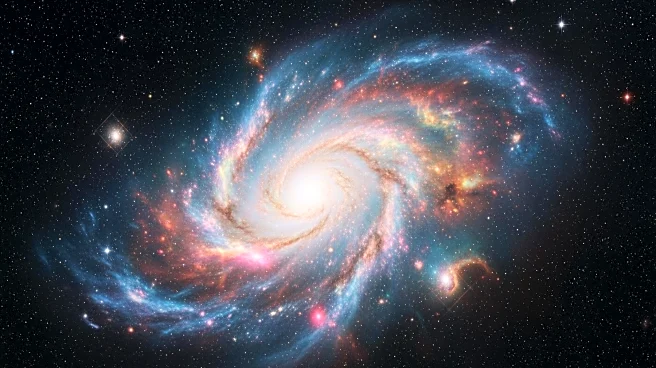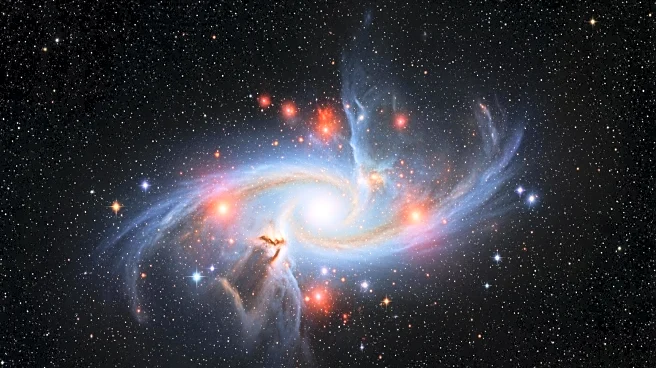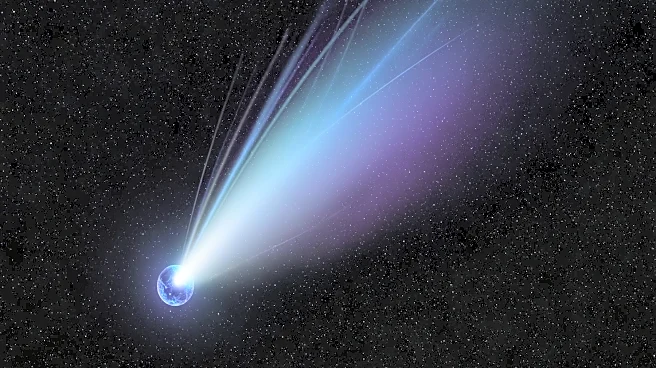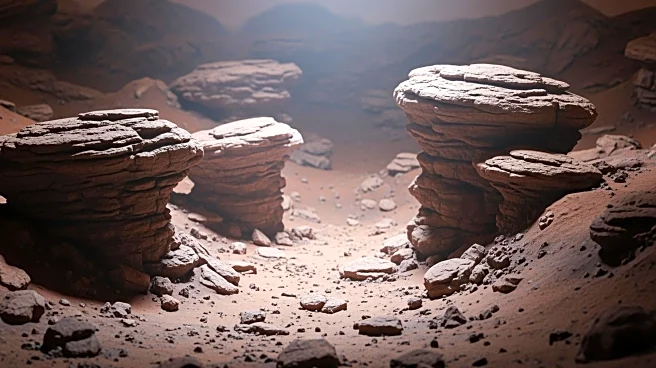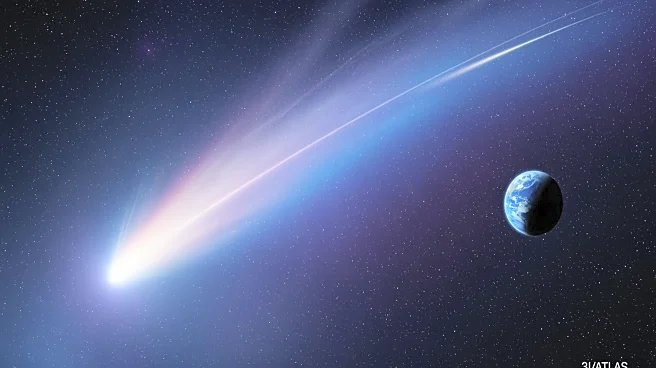What's Happening?
The European Space Agency's Euclid space telescope has captured a detailed image of the nebula LDN 1641, located in the constellation of Orion. This nebula, part of a dark cloud complex, is approximately
1300 light-years from Earth and is a site of active star formation. The Euclid telescope, using its Near Infrared Spectrometer and Photometer (NISP) instrument, has revealed a multitude of stars shining through the dust and gas, which are typically obscured in visible light. The image highlights young stars and material outflows, indicating ongoing star formation. Euclid's observations are part of its mission to create a comprehensive 3D map of the extragalactic universe, aiming to understand dark matter and dark energy.
Why It's Important?
The Euclid telescope's ability to capture detailed images of star-forming regions like LDN 1641 is crucial for advancing our understanding of stellar formation and the structure of the universe. By penetrating the dust clouds that obscure these regions in visible light, Euclid provides astronomers with valuable data on the processes that lead to star formation. This contributes to broader scientific efforts to map the universe and understand the fundamental forces at play, such as dark matter and dark energy. The mission's success in fine-tuning its observational capabilities also sets a precedent for future astronomical surveys and research.
What's Next?
Euclid will continue its mission to survey the sky, aiming to create the most extensive 3D map of the universe. This will involve further observations of both extragalactic and galactic regions, providing a wealth of data for astronomers. The insights gained from these observations are expected to enhance our understanding of cosmic phenomena and contribute to the development of new theories in astrophysics.


